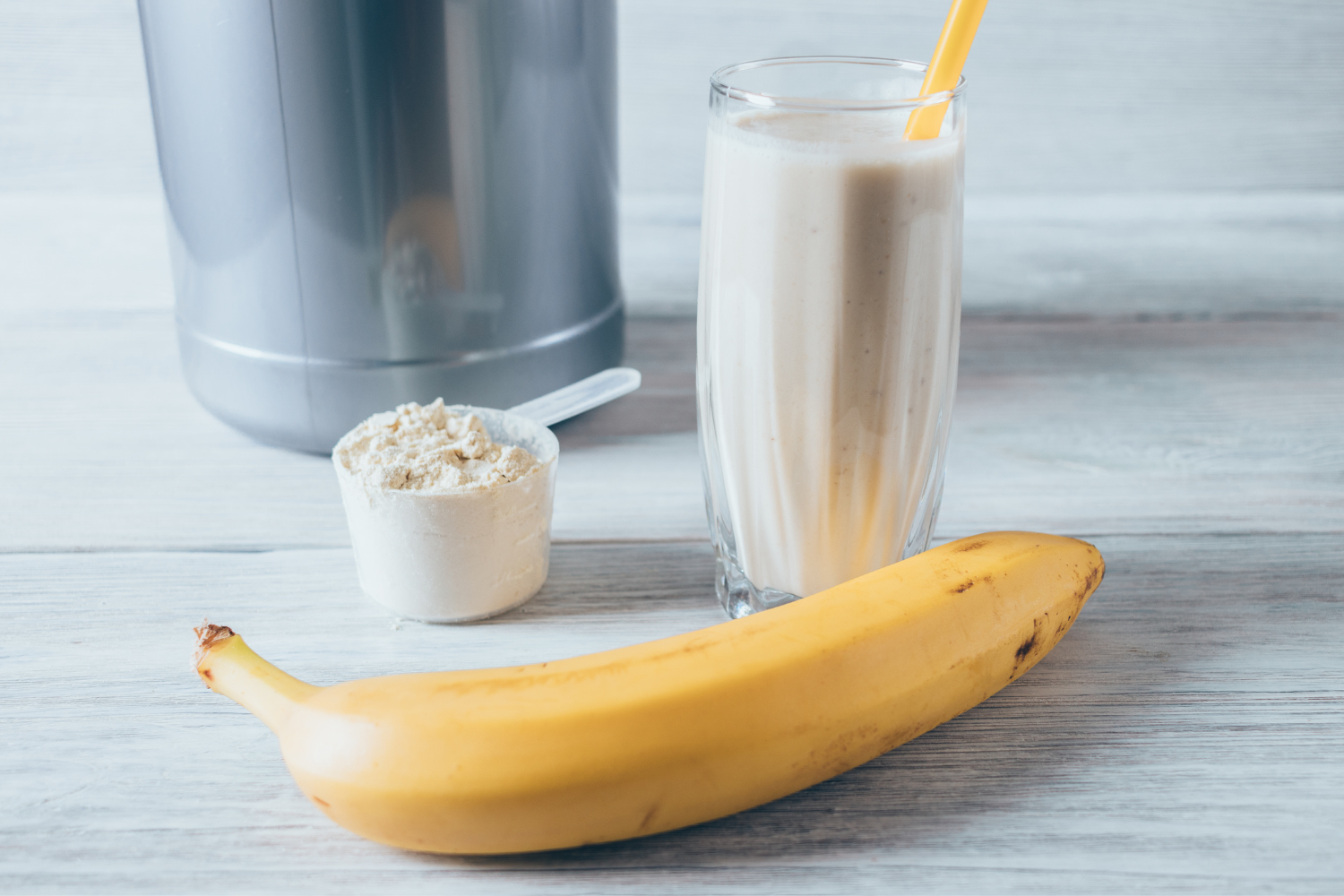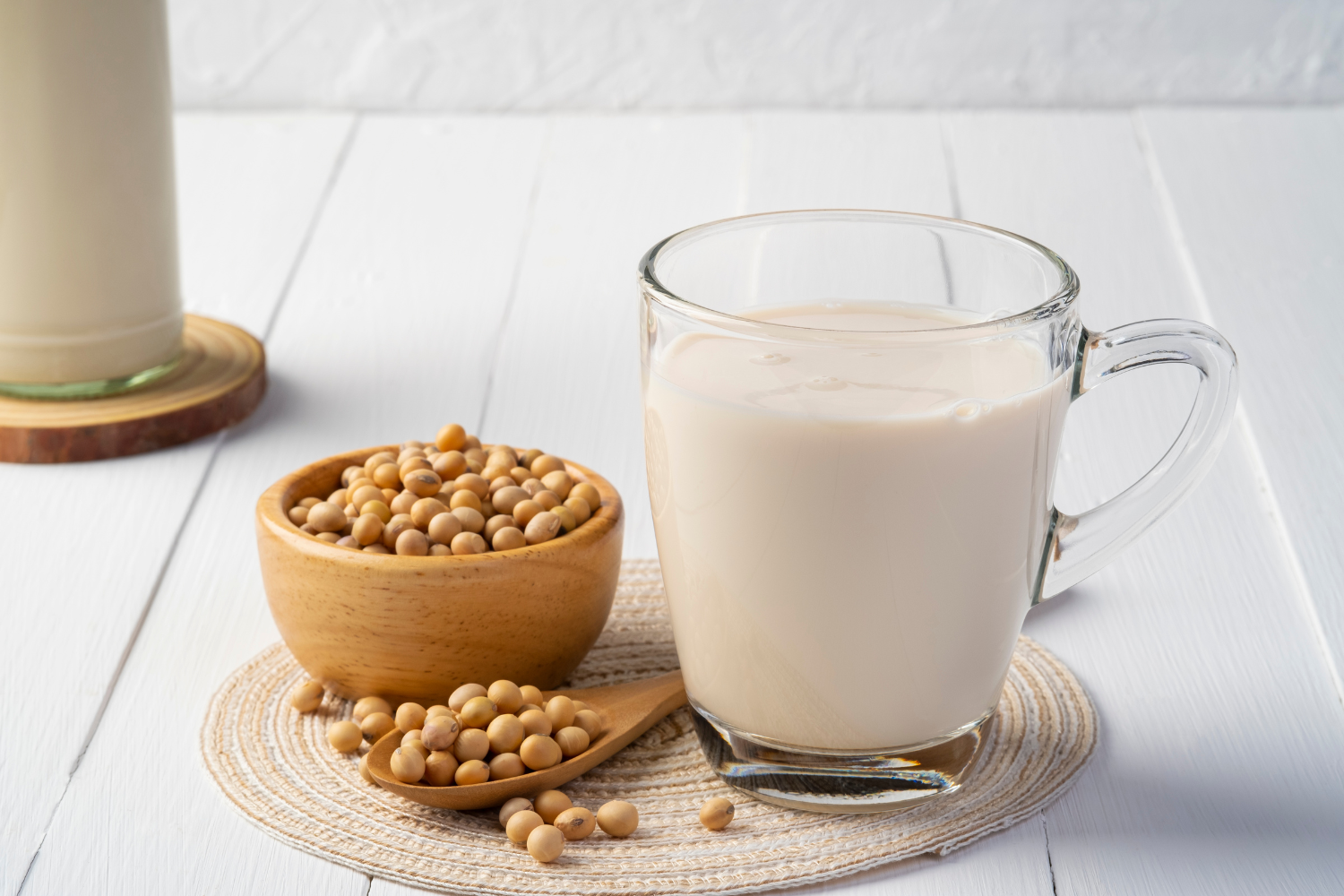The demand for plant-based nutrition is rising as consumers look for dairy-free, soy-free, and sustainable alternatives to traditional products. From plant-based infant formula to protein supplements, brands must carefully select ingredients like soy protein, pea protein, and organic rice starch to meet nutritional needs.
Developing a high-quality plant-based formula requires balancing essential amino acids, vitamin D, folic acid, and iron absorption while ensuring it supports normal growth and brain development. This guide covers the key aspects of formulating a plant-based alternative, including ingredient choices, food processing considerations, and positioning in the competitive market.
Table of Contents
ToggleWhat Is a Plant-Based Formula?
A plant-based formula is made entirely from plant-derived ingredients such as fruits, vegetables, seeds, legumes, and algae. It excludes animal-based components like cow’s milk, gelatin, and collagen, making it a suitable option for vegan families, those with lactose intolerance, or individuals with a cow’s milk allergy. Many plant-based alternatives are formulated with essential amino acids, vitamins, and minerals to support balanced nutrition.

Types of Plant-Based Nutrition Products
Plant-based nutrition products come in various forms to meet different dietary and health needs.
- Protein Powders – Made from pea protein, brown rice protein, hemp protein, or soy protein isolate.
- Meal Replacements – Balanced blends of plant-based proteins, healthy fats, and fiber for complete nutrition.
- Supplements – Plant-sourced multivitamins, omega-3s, probiotics, and adaptogens.
- Functional Beverages – Ready-to-drink shakes, green blends, and energy-boosting drinks.

Key Ingredients in a Plant-Based Formula
A high-quality plant-based formula requires the right mix of proteins, healthy fats, carbohydrates, vitamins, and functional ingredients to provide essential nutrients.
Plant-Based Protein Sources
Protein is essential for muscle repair, growth, and overall health. A well-formulated plant-based diet includes a variety of protein sources.
- Pea Protein – High in branched-chain amino acids (BCAAs) and easy to digest.
- Brown Rice Protein – Complements pea protein to create a complete amino acid profile.
- Hemp Protein – Contains omega-3s, fiber, and essential minerals.
- Pumpkin Seed Protein – Nutrient-dense and suitable for those with soy allergies.
- Soy Protein – A complete protein but controversial due to phytoestrogens and potential soy allergy concerns.
Plant-Based Healthy Fats
Healthy fats are an important part of a balanced diet and contribute to energy production. Plant-based formulas use fats from sources such as seeds and algae.
- MCT Oil (from coconut) – A quick and efficient energy source.
- Flaxseed & Chia Seeds – Rich in omega-3 fatty acids and fiber.
- Algal Oil – A vegan source of DHA, supporting heart and brain health.
Carbohydrate & Fiber Sources
Carbohydrates provide energy, while fiber supports digestion and gut health. Plant-based formulas often include slow-digesting and prebiotic-rich ingredients.
- Oats & Quinoa – Slow-digesting carbohydrates with added protein and fiber.
- Tapioca & Sweet Potato Powder – Natural sources of energy.
- Prebiotic Fiber (Inulin, Acacia Fiber) – Supports gut health and digestion.
Vitamins & Minerals from Plant Sources
A complete plant-based formula must include essential vitamins and minerals to meet nutritional needs and prevent deficiencies.
- Vitamin B12 (Methylcobalamin) – Found in algae or produced through fermentation.
- Iron (Ferrous Bisglycinate) – A bioavailable form of iron often used in supplements, while plant-based sources include leafy greens and legumes.
- Calcium (Algae-Based) – A non-dairy alternative to traditional calcium sources.
- Zinc & Magnesium – Often sourced from seeds, nuts, and whole foods.
Functional Ingredients for Added Benefits
Functional ingredients enhance the health benefits of a plant-based formula, supporting digestion, energy levels, and immune function.
- Probiotics & Prebiotics – Commonly included in formulations that support digestive health.
- Adaptogens (Ashwagandha, Rhodiola, Maca) – Help manage stress and maintain energy balance.
- Superfoods (Turmeric, Spirulina, Chlorella) – Popular for their antioxidant content and inclusion in wellness-focused formulations.
A well-balanced plant-based formula combines these ingredients to offer complete nutrition for individuals following a vegan lifestyle or seeking a dairy-free alternative.

Challenges in Formulating a Plant-Based Product
Developing a high-quality plant-based formula comes with several challenges, from ensuring complete nutrition to improving taste and shelf stability. Addressing these issues requires strategic ingredient selection and formulation techniques.
Achieving a Complete Amino Acid Profile
Most plant-based protein sources lack one or more essential amino acids, making it difficult to achieve a nutritionally complete formula. Pea protein, for example, is low in methionine, while rice protein lacks lysine.
Blending complementary proteins, such as pea and rice protein, helps achieve a more balanced amino acid profile, which can contribute to overall nutritional adequacy.

Taste & Texture Issues
Some plant-based proteins have a naturally earthy or gritty texture, which can affect the overall taste of the product. Soy protein isolate, for example, may have a beany flavor, while hemp protein can feel coarse.
Enhancing the formula with natural sweeteners, flavor enhancers, or smoother protein blends improves taste and mouthfeel. Options like stevia, monk fruit, or vanilla extract can help mask bitterness without adding artificial ingredients.
Shelf Stability & Preservation
Some plant-based formulas may have a shorter shelf life depending on ingredient stability and processing methods. Ingredients like organic rice starch and whole-food-based nutrients may degrade faster than highly processed alternatives.
Natural preservatives, such as rosemary extract and tocopherols (vitamin E), help extend freshness without compromising clean-label claims. Proper packaging, such as vacuum-sealed or nitrogen-flushed containers, helps maintain product stability.

Allergen Considerations
Soy, nuts, and gluten are common allergens found in plant-based formulas, making it important to consider sensitivities when developing products. A soy-based infant formula, for instance, may not be suitable for babies with a soy allergy.
Choosing hypoallergenic ingredients like pea protein, rice protein, and buckwheat flour reduces the risk of allergic reactions. Clearly labeling potential allergens ensures transparency and helps consumers make informed choices.

How to Choose the Right Ingredients for Your Target Audience
Selecting the right ingredients depends on the needs and preferences of the target market. Formulations should be tailored to specific dietary and lifestyle goals.
Athletes & Fitness Enthusiasts
Athletes require a high-protein plant-based formula rich in branched-chain amino acids (BCAAs) to support muscle recovery and performance. Pea protein and soy protein isolate are commonly used together to help achieve a balanced amino acid profile.
Electrolytes such as potassium, magnesium, and sodium help with hydration and muscle function. Adding coconut water powder or Himalayan salt can enhance electrolyte balance for active consumers.
General Health & Wellness Consumers
Consumers seeking plant-based nutrition for overall health benefit from a balanced mix of macronutrients and functional superfoods. A blend of protein, healthy fats, and slow-digesting carbohydrates supports sustained energy and wellness.
Prebiotic fiber and digestive enzymes improve gut health by promoting beneficial bacteria growth and easing digestion. Ingredients like inulin, acacia fiber, and papain (a natural enzyme) can enhance digestibility.
Vegan & Environmentally Conscious Consumers
Vegan families and environmentally conscious shoppers prioritize organic, non-GMO, and sustainably sourced ingredients. Plant-based infant formula, for example, often uses organic rice starch or soy-free alternatives to align with these values.
Eco-friendly packaging, such as compostable pouches or recyclable containers, reinforces a brand’s commitment to sustainability. Using plant-based inks and biodegradable labels can further appeal to eco-conscious consumers.
Weight Management & Meal Replacement Users
Consumers seeking weight management solutions benefit from high-fiber, low-calorie formulas with slow-digesting carbohydrates. Ingredients like oat fiber, chia seeds, and sweet potato powder help promote fullness and steady energy levels.
Some formulations include ingredients like green tea extract and cayenne pepper, which are commonly used in weight management products. Formulas designed for meal replacement should provide essential nutrients while maintaining a balanced diet.
Best Practices for Formulating a Market-Ready Product
Creating a successful plant-based formula requires high-quality ingredients, thorough testing, regulatory compliance, and strong market positioning. Following these best practices ensures a product that meets consumer expectations and industry standards.
Ingredient Sourcing & Quality Control
Partnering with reputable suppliers ensures the use of organic, non-GMO, and third-party-tested ingredients. High-quality sources of plant-based protein, healthy fats, and essential nutrients help maintain product integrity. Transparent sourcing practices, such as traceability and supplier certifications, build consumer trust and strengthen brand credibility.
Testing & Optimization
Stability and sensory testing are essential to confirm product quality, texture, and shelf life. Testing for factors like amino acid retention, vitamin stability, and iron absorption ensures a nutritionally complete formula. Gathering consumer feedback on taste, mixability, and digestibility helps refine formulations before market launch.
Compliance & Labeling
Following FDA regulations and industry guidelines is critical for plant-based product claims. Labels should clearly identify allergens like soy, gluten, and nuts while highlighting key vegan, dairy-free, or organic certifications. Proper compliance helps prevent legal issues and ensures transparency with consumers.

Branding & Positioning in the Market
Aligning with plant-based trends, such as sustainability and clean-label formulations, strengthens brand appeal. Using functional ingredients like adaptogens or superfoods can differentiate products from competitors. Unique packaging designs, such as eco-friendly materials or single-serving formats, enhance brand recognition and consumer interest.

Creating a High-Quality Plant-Based Formula for Market Success
Developing a plant-based formula requires careful ingredient selection, taste optimization, and regulatory compliance. Understanding the target audience helps create a product that aligns with consumer preferences and market trends.
A well-balanced blend of plant proteins, healthy fats, and functional ingredients ensures nutritional quality and competitive positioning. With the right formulation strategy, brands can meet demand and stand out in the growing plant-based nutrition market.
Frequently Asked Questions
What is the best plant-based protein for a supplement?
Pea and rice protein are commonly used to provide a complete amino acid profile. Hemp and pumpkin seed protein are also great options.
How do I improve the taste of a plant-based formula?
Use natural sweeteners like monk fruit or stevia, add vanilla or cocoa powder for flavor, and blend proteins to reduce grittiness.
Are plant-based formulas better for digestion?
Plant-based products with added digestive enzymes and prebiotics are often formulated to support digestive health.
How do I ensure my plant-based formula meets consumer demand?
Stay updated on industry trends, conduct market research, and test formulations with potential customers.
What certifications should I consider for a plant-based product?
Vegan, USDA Organic, Non-GMO, NSF Certified, and gluten-free certifications can increase consumer trust and marketability.
References
- National Institutes of Health. (2024). Iron – Health Professional Fact Sheet. https://ods.od.nih.gov/factsheets/Iron-HealthProfessional/
- National Institutes of Health. (2024). Omega-3 Fatty Acids – Health Professional Fact Sheet. https://ods.od.nih.gov/factsheets/Omega3FattyAcids-HealthProfessional/
- National Institutes of Health. (2024). Vitamin D – Health Professional Fact Sheet. https://ods.od.nih.gov/factsheets/VitaminD-HealthProfessional/
- National Research Council (US) Subcommittee on the Tenth Edition of the Recommended Dietary Allowances. Recommended Dietary Allowances: 10th Edition. Washington (DC): National Academies Press (US); 1989. 6, Protein and Amino Acids. Available from: https://www.ncbi.nlm.nih.gov/books/NBK234922/
- U.S. Food and Drug Administration. (2024). Nutrition, Food Labeling, and Critical Foods. https://www.fda.gov/food/nutrition-food-labeling-and-critical-foods




